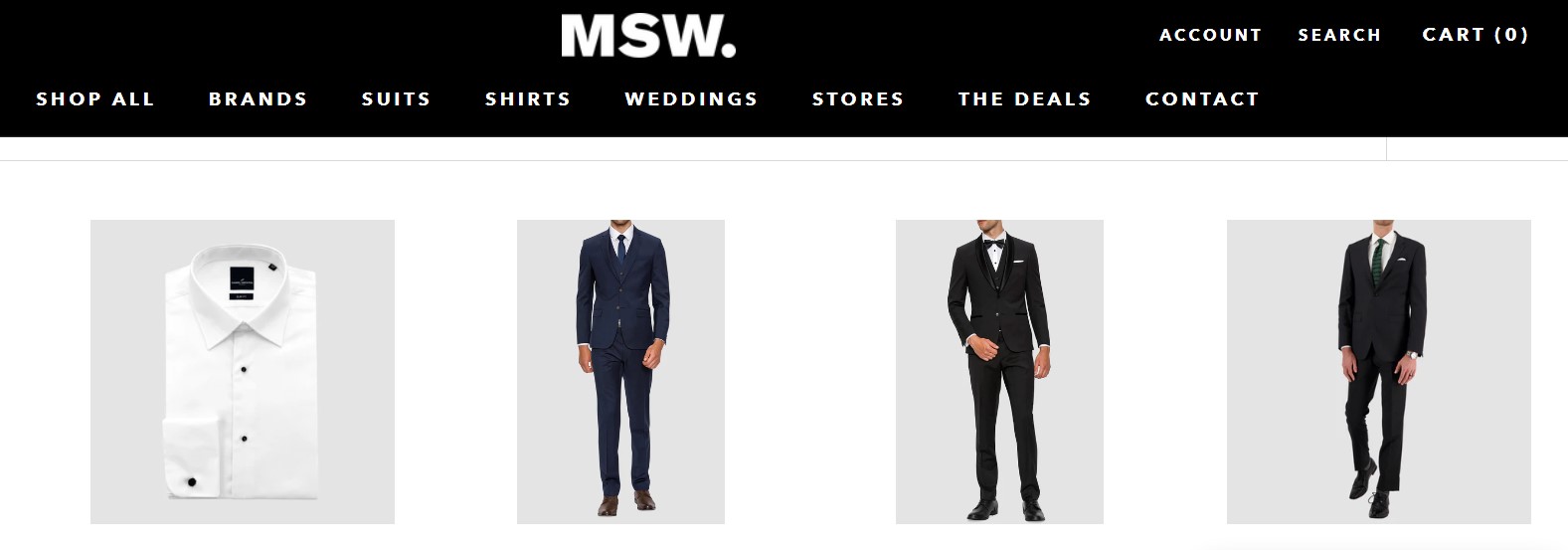In the competitive landscape of the corporate world, appearance often speaks volumes before a single word is uttered. A well-dressed professional exudes confidence, competence, and respect for their environment. Central to this polished appearance is the suit, a timeless symbol of business attire.
This blog explores the intricate relationship between men’s suits and business etiquette, providing comprehensive insights into dressing for success in the corporate world.
The Importance of a Suit in Business
Professionalism and First Impressions
First impressions are formed within seconds, and in a business setting, they can significantly influence career opportunities and professional relationships. A well-tailored suit immediately conveys professionalism. It shows that you take your role seriously and respect the business environment. Clients, colleagues, and superiors are more likely to trust and engage positively with someone who presents themselves well.
Confidence and Self-Perception
Wearing a suit can enhance self-perception and confidence. The adage “dress for the job you want, not the job you have” highlights the psychological impact of dressing well. A suit can make you feel more competent and prepared, boosting your performance in meetings, presentations, and negotiations.
Uniformity and Tradition
Suits have long been a staple in business attire, reflecting a tradition of uniformity and respect. This consistency helps to maintain a professional atmosphere and can level the playing field, reducing distractions related to varying fashion styles. Adhering to this tradition signals your understanding and acceptance of established business norms.
Components of a Business Suit
The Jacket
The jacket is the centerpiece of a suit. It should fit well in the shoulders and waist, offering a sleek silhouette. Single-breasted jackets with two or three buttons are classic choices for business settings. The color and fabric should align with the formality of your office environment, with navy, charcoal, and black being versatile options.
The Trousers
Trousers should complement the jacket in both color and fabric. The fit should be comfortable but tailored, avoiding excess fabric. A slight break at the shoes is standard, creating a clean line that enhances the suit’s overall look.
The Shirt
A crisp, well-fitting shirt is essential. White and light blue are traditional choices that pair well with most suit colors. Ensure the collar fits properly, allowing enough room for a tie but not being too loose. The shirt should be ironed and free of wrinkles for a polished appearance.
The Tie
A tie adds a finishing touch to the suit. It should complement the suit and shirt in both color and pattern. Simple, classic designs such as solid colors, stripes, or small patterns are safe choices. Ensure the tie is of appropriate length, reaching the belt buckle.
Shoes and Accessories
High-quality leather shoes, such as oxfords or brogues, complete your corporate attire. They should be polished and in good condition. Accessories like belts, cufflinks, and watches should be understated, enhancing the suit without drawing excessive attention.
Business Etiquette and Suit Wearing
Dressing Appropriately for the Occasion
Understanding the context of your business environment is crucial. While a suit is often appropriate for meetings, presentations, and client interactions, some workplaces may have specific dress codes for different occasions. Always consider the formality of the event and dress accordingly.
Maintaining Your Suit
A well-maintained suit reflects your attention to detail and respect for your professional appearance. Regularly dry clean your suits, store them properly on sturdy hangers, and use garment bags to protect them from dust. Address minor issues like loose buttons or small tears promptly.
Understanding Dress Codes
Different businesses have varying dress codes, from business formal to business casual. It’s important to understand and adhere to these guidelines to ensure you are appropriately dressed. Business formal typically requires a dark suit, white shirt, and conservative tie, while business casual may allow for more flexibility, such as chinos and blazers without a tie.
Personal Grooming
Your suit is only part of your overall appearance. Personal grooming, including hair, facial hair, and nails, should be neat and professional. This attention to detail enhances the effectiveness of your suit and contributes to a polished image.
Adapting to Changing Trends
Modern Suit Styles
While classic suit styles remain timeless, modern variations can also be appropriate for business settings. Slim-fit suits offer a contemporary look that can still be professional if well-tailored. Incorporating subtle patterns or lighter colors can also modernize your wardrobe without compromising on professionalism.
Business Casual Evolution
The rise of business casual attire has influenced suit wearing in many corporate environments. While the full suit may not always be necessary, integrating suit elements like blazers or tailored trousers into business casual outfits can maintain a professional edge.
Seasonal Adaptations
Adjusting your suit choices based on the season is practical and shows adaptability. Lightweight fabrics like linen or cotton are suitable for summer, while wool or tweed are ideal for colder months. Seasonal colors can also add variety while remaining professional.
In the corporate world, a well-chosen suit is more than just clothing; it is a symbol of professionalism, confidence, and respect. Understanding the components of a suit, maintaining it properly, and adhering to business etiquette can significantly impact your career success.

